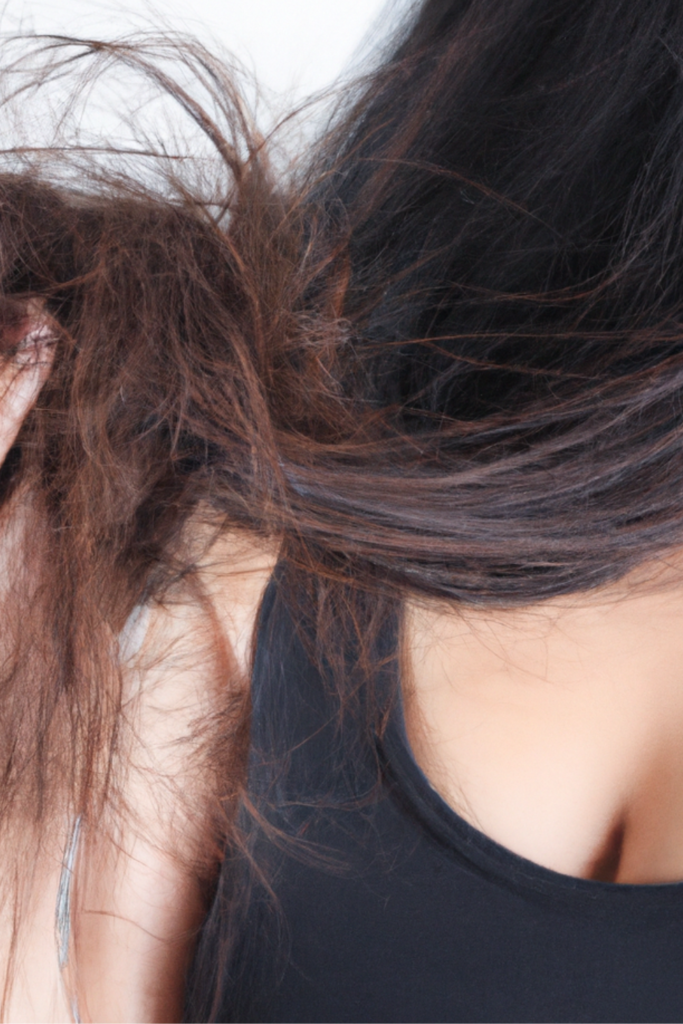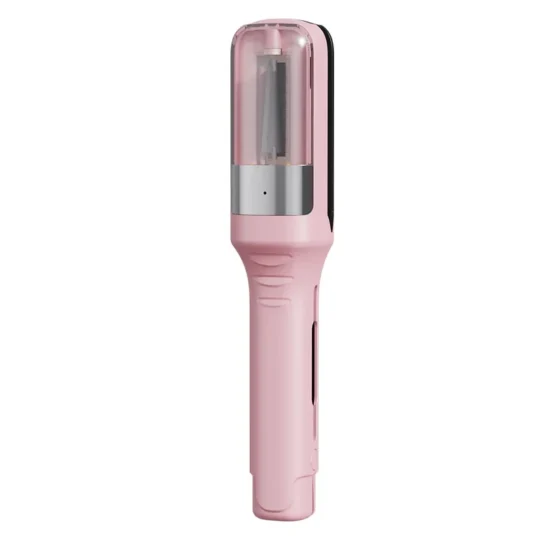Your cart is currently empty!
The Science Behind Split Ends and How to Treat Them
The Science Behind Split Ends and How to Treat Them

Split ends are one of the most common issues that women face when it comes to hair health. Whether your hair is long or short, straight or curly, the tips of your strands are constantly exposed to damage. Understanding the science behind split ends is key to finding the best solution to prevent and treat them. Fortunately, there’s a way to combat split ends without sacrificing the length of your hair—and we’ll explore that as we go along.
What Are Split Ends?
In scientific terms, split ends (also known as trichoptilosis) occur when the protective outer layer of the hair, known as the cuticle, becomes damaged or worn down. The hair shaft frays, causing the fibers inside to unravel. This leads to a “split” at the tip of the hair strand. If left untreated, split ends can continue to tear upwards, damaging more of the hair shaft and making the hair appear dry, frizzy, and unkempt.
Why Do Split Ends Happen?
There are several reasons why split ends develop, and most of them are related to everyday hair habits and environmental factors:
- Heat Styling: Frequent use of flat irons, curling irons, and blow dryers weakens the hair shaft by removing moisture and weakening the hair’s structure.
- Chemical Treatments: Coloring, perming, or relaxing hair can cause chemical bonds to break down, weakening the cuticle and leading to splits.
- Mechanical Damage: Rough brushing, towel drying, and even tight hairstyles can cause physical damage to the hair, resulting in split ends.
- Environmental Stressors: Sun exposure, wind, and pollution can all contribute to the deterioration of the hair’s protective layer.
- Lack of Moisture: Dry hair is more prone to breakage, and split ends are often the result of hair being too dry and brittle to withstand daily wear and tear.
The Different Types of Split Ends
Not all split ends are the same, and understanding the different types can help you know how serious the damage is. Here are a few common variations:
- Baby Split: The tip of the hair splits into two; this is the most common type.
- Tree: One hair strand splits into multiple sections, resembling the branches of a tree.
- Fork Split: A more advanced form of the basic split, where the hair splits into three or more sections.
- Feathered Split: The hair shaft is split at multiple points, giving the appearance of a feather.

Traditional Treatments for Split Ends
For years, the standard advice for dealing with split ends has been to get regular trims. The idea is to cut off the damaged ends before they can travel further up the hair shaft. While this works, it also means sacrificing hair length—which many women are reluctant to do.
Other common treatments include deep conditioning masks, oils, and leave-in conditioners designed to temporarily smooth the appearance of split ends. However, these products only mask the problem and do not repair the damage. The real solution lies in removing the split ends completely.
A New Solution: Innovative Split-End Hair Trimmers
Enter the innovative split-end hair trimmer, a revolutionary tool that allows you to treat split ends without losing length. Unlike traditional scissors, which cut off a significant portion of your hair, the split-end trimmer works by selectively trimming the frayed ends while leaving the rest of the strand intact. This allows you to maintain your desired length while keeping your hair looking healthy and vibrant.
How Does the Split-End Trimmer Work?
The split-end trimmer uses a unique mechanism that glides through your hair, identifying and cutting only the split ends. Here’s how it works:
- Section Your Hair: To start, section your hair into manageable portions, as you would when straightening or curling.
- Run the Trimmer Through Each Section: The trimmer is designed to gently separate damaged ends from the healthy strands and trim only the frayed tips.
- Enjoy Smoother Hair: After just one session, you’ll notice smoother, healthier-looking hair with no sacrifice in length.
Benefits of Using a Split-End Trimmer
- Preserve Hair Length: Unlike traditional trims that remove inches, the split-end trimmer targets only the damaged portions of your hair, letting you keep your length.
- Prevent Further Damage: By regularly trimming off split ends, you prevent them from traveling further up the hair shaft, protecting the overall health of your hair.
- Save Time and Money: Instead of frequent salon visits, you can maintain your hair’s health from the comfort of your home with the split-end trimmer.
- Easy to Use: With a simple design, the trimmer is user-friendly and requires minimal training to achieve professional results.
Preventing Split Ends in the Future
While the split-end trimmer is an excellent tool for maintaining healthy hair, preventing split ends from forming in the first place should be your ultimate goal. Here are a few tips to keep your hair looking its best:
- Minimize Heat Styling: Limit the use of heat tools or use them on lower settings to reduce heat-related damage.
- Moisturize: Incorporate regular deep conditioning treatments and use hydrating hair oils to maintain moisture in your hair.
- Be Gentle: Use a wide-tooth comb on wet hair and avoid tugging or pulling when brushing.
- Protect Your Hair: Wear hats or use UV protection sprays when in the sun, and avoid overly tight hairstyles that cause stress on the hair.
Conclusion
Understanding the science behind split ends is the first step to taking better care of your hair. While traditional trims were once the go-to solution, new tools like the split-end hair trimmer make it easier than ever to maintain long, healthy hair. With a blend of preventive care and the right technology, you can enjoy beautiful, damage-free hair for the long term.
-
 Electric Hair Trimmer25,45 € – 26,26 €
Electric Hair Trimmer25,45 € – 26,26 €

Leave a Reply